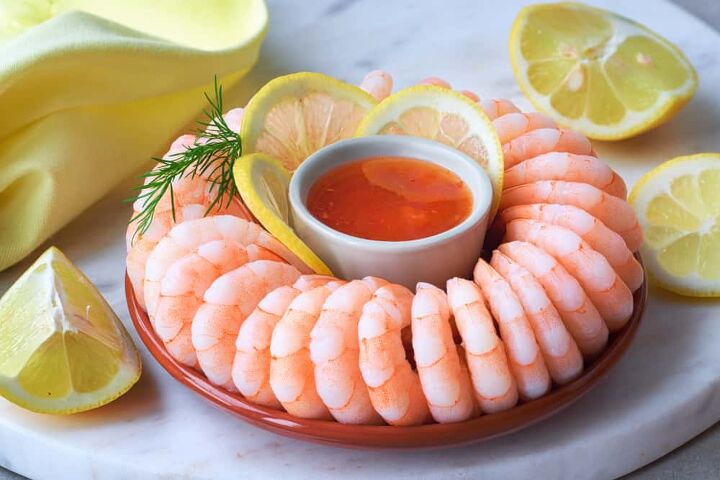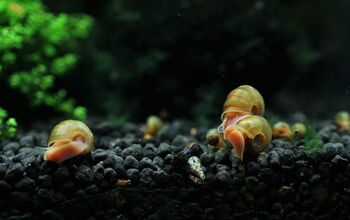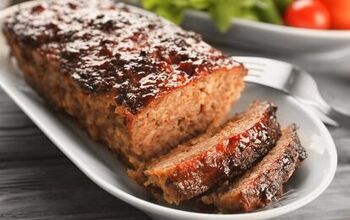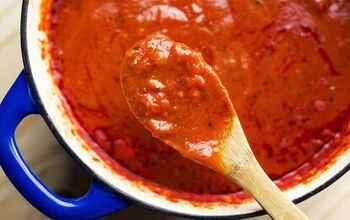How Long Does Cooked Shrimp Last In The Fridge?

If there’s one thing that people tend to be leery about eating, it’s seafood. Even when it’s fresh, people get worried about the possibility of food-borne illnesses due to the lightning-fast rate of spoiling seafood has. Though people are more amenable to shrimp than other shellfish, shrimp remains a little sketchy to eat after it’s been cooked and refrigerated.
Regardless, the best way to maintain the safety and quality of cooked shrimp is to refrigerate it, and properly. When cooked shrimp is refrigerated, it will last in the fridge for 3 to 4 days. After that, it is no longer safe to consume and should be thrown away. Though, to further extend the life of cooked shrimp, you can freeze it.
While there are some foods that you can be lenient with in terms of expiration dates, shrimp isn’t one of them. Anyone who wants to have an iota of food safety standards in their kitchen needs to be aware of what they can and cannot do when it comes to shrimp.
How Long Is Your Cooked Shrimp Good For?
Like with many other foods, how you got your cooked shrimp matters just as much as how long you have been trying to store it. It’s best to break this down by type to get a better idea of what to expect:
- If you cooked the shrimp yourself, got it from a restaurant, or have some cooked shrimp that you bought from the grocery store, you have a maximum of three days to eat it if it’s refrigerated. This tends to be the best guideline for the bulk of shrimp treats that you’ll get.
- Grocery store shrimp will have expiration date labels that you should follow. Unlike “Best By” labels on canned food, the expiration dates on packaged cooked shrimp from your grocer’s seafood section is rigid. As in, it’s not a suggestion. If your package has an expiration date, follow it even if you re-cook it before you pop it in the fridge.
- Canned shrimp that’s left in a sealed can has a shelf life of six to eight months. You can leave it in the fridge or on a shelf with the same results. Just don’t freeze it, as cans have the potential to explode if they are frozen to the point of expansion.
Can You Freeze Cooked Shrimp?
People who want to extend the lifespan of their shrimp dishes will be relieved to know that freezing is an option for virtually all types of shrimp. If you want to freeze canned shrimp, just take them out of the can before you do so. Shrimp should be placed in an airtight bag or a Tupperware-style container, then placed in a freezer.
If you choose to freeze your cooked shrimp, you should expect to have it last for six to nine months. Once you’re ready to thaw it out, then you just need to stick it in your fridge and cook it up when you’re ready. Once it’s thawed, you have three days to eat it.
Is Shrimp Dangerous To Eat Past Its Expiration Date?
The answer here is an overwhelming yes. Eating shrimp that is past its expiration date is a lot like playing Russian roulette. There’s a very good chance that you could cause serious harm to yourself if you choose to do so. Food poisoning from shellfish can lead to nausea, diarrhea, cramps, upset stomach, and vomiting—at the very least.
If the shrimp you eat expired and had extreme bacterial growth, you also may experience blood in your stool, a fever, and uncontrollable vomiting. Should this occur, you will need to go to the emergency room to make sure you don’t die.
How Can You Tell If Your Cooked Shrimp Has Gone Bad?
When it comes to figuring out if you have shellfish gone bad, you don’t have to worry too much about subtleties. Your cooked shrimp will be a lot more striking when it goes bad than most. Regardless, here’s what you need to watch for:
- If it doesn’t pass the “sniff” test, it’s gone bad. Expired shellfish has a very distinct odor. It’s a fishy smell that has an undertone of ammonia. Should you get a whiff of this, toss it out.
- Check the texture of the shrimp. If you’re still not sure, touch the shrimp’s surface. Like most other meats that go bad, shrimp gone wrong will have a slimy texture. This suggests that the flesh is starting to putrefy and that bacteria are working on breaking it down.
- You might also notice a change in color in the shrimp. Cooked shrimp, when fresh, turns a nice pink color. If you start noticing yellowing, it’s gone bad.
- Unlike other foods, we do not suggest tasting the shrimp to try to determine if it’s spoiled. Due to the sheer risk of having food-borne illnesses, tasting shrimp that might be spoiled is a gamble you shouldn’t take. If you’re even the slightest bit doubtful of the shrimp’s freshness, just throw it out.
Understanding Food Pathogens In Shrimp
Part of the stigma shellfish has deals with the pathogens that shrimp can carry. Believe it or not, pathogens can harm shrimp even if the shrimp is fresh. You won’t be able to detect food-borne pathogens by looks or smell alone all the time. So if you do choose to eat shrimp, make sure it’s from a place that you trust.
Can You Freeze Cooked Shrimp?
Absolutely! In fact, freezing cooked shrimp in an airtight container, a heavy-duty bag, or a lot of foil is the best way to make sure that your shrimp stays fresh for longer. If you store your cooked shrimp in the freezer, then you can expect it to last for up to six months. When you’re ready to thaw it up, move it to the fridge then reheat your shrimp.
Important Food Safety Tips That You Need To Be Aware Of
If you’re concerned about eating shrimp leftovers, you’re not alone. In fact, you’re smart to be a little concerned. However, it’s easy to learn how to stay safe. These tips below are the ones you want to keep in mind.
- Always store shrimp in an airtight container. Like other foods, exposure to air can cause rot to accelerate. We suggest getting a solid container or using a lot of tin foil.
- Cook raw shrimp within a day or two of buying it. If you’re cooking frozen shrimp, leave the shrimp frozen until you’re ready to cook it. Raw shrimp goes bad faster than cooked shrimp.
- To prevent foodborne illness, make sure that you cook it until the shrimp turns pink. If the shrimp is still blue, it’s not good to eat.
- The best way to keep shrimp is in a container that’s labeled and dated. This prevents you from going past an expiration date.
- If the shrimp in question has an expiration date, adhere to it but still check for spoilage before you eat. The expiration date is the longest that your shrimp has before you need to throw it out. It’s possible for shrimp to go bad prior to its expiration date in some cases.
- Do not store shrimp at room temperature for more than one to two hours. This is how long you’ve got before bacterial growth becomes too excessive. Some even suggest keeping shrimp out at a maximum of one hour. This means that most of the shrimp in “all you can eat” buffets are risky according to FDA guidelines.
Related Questions
How can you reheat frozen shrimp?
There are several ways you can reheat your frozen shrimp. The most common methods include microwaves, skillets, or steamers. If you have a recipe that calls for cooked shrimp, then you can just incorporate them into the recipe as it dictates. As long as the shrimp is properly heated, you should be good to go.The only drawback is that shrimp can taste a little fishy or dry when it’s reheated. However, this isn’t a safety issue. It’s just the way that the shrimp’s flavor evolves after reheating.
How easy is it to find fresh shrimp?
Most of the “fresh” shrimp that you see in grocery stores is actually just frozen when it was caught, though it is still safe to eat. (In fact, it’s done to keep it safe to eat.) It is exceedingly difficult to find shrimp that is brought in straight from the dock. While it may be possible to find on the coast, the truth is that most landlocked areas will not have this as a possibility.
Can you reheat shrimp more than once?
While you can reheat shrimp once it’s been frozen, reheating your shrimp multiple times is not advised. It can put your shrimp at risk of contamination and will also have a negative impact on the flavor of the food. If you can’t finish the rest of your leftovers after your first reheating session, just throw the rest out.
See How Long Other Foods Last In The Fridge

Ossiana Tepfenhart is an expert writer, focusing on interior design and general home tips. Writing is her life, and it's what she does best. Her interests include art and real estate investments.
More by Ossiana Tepfenhart
















![12 Washing Machine Brands to Avoid [with Recall Data]](https://cdn-fastly.upgradedhome.com/media/2023/07/31/9075781/12-washing-machine-brands-to-avoid-with-recall-data.jpg?size=350x220)










